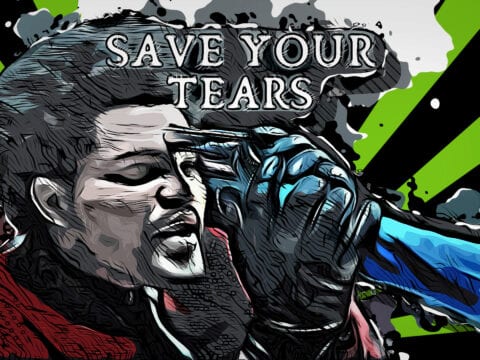
Heavy metal music originated from the heavier rock and roll bands of the late 1960s, including Led Zeppelin, Deep Purple, and Budgie in the U.K. and Steppenwolf and Blue Cheer in the United States. In particular, Deep Purple combined an appreciation for classical music (mainly through Deep Purple’s guitarist Ritchie Blackmore and organist Jon Lord) with distorted rock music that would later inspire heavy metal musicians. Increasingly, some music journalists and critics referred to these bands as “heavy metal” in the press. However, they would not likely be referred to as heavy metal by fans today.
Since the first metal bands debuted in the early 1970s, heavy metal has spawned dozens of subgenres based on factors such as song tempo, vocal performance, guitar and drumming techniques, and visual image. With so many subgenres, there are conflicting definitions of what constitutes a certain type of heavy metal music. Some bands defy the conventions of particular subgenres. Some heavy metal bands that have had lengthy careers have evolved their sound over several albums, shifting from one metal subgenre to another.
As with other music genres, many bands do not completely fit the heavy metal archetypes but are nonetheless still popular with heavy metal audiences. Bands like Australia’s AC/DC, England’s Mötorhead, Germany’s Scorpions, and Canada’s Rush feature a hard rock sound rooted in other rock genres and have influenced heavy metal bands, but they are generally not considered heavy metal musicians. We will now begin to explore the history of Heavy Metal music.
How Did Heavy Metal Music Begin?
Because heavy metal evolved from rock and roll, music historians continue to debate on what should be considered the “first” heavy metal record. Rock musicians had been using guitar distortion in production long bands that inspired heavy metal, like Led Zeppelin and Deep Purple, incorporated it in their music.
One of the earliest contenders for the first “heavy metal song” is “Summertime Blues,” which was released by the San Francisco blues-rock trio Blue Cheer in January 1968. “Summertime Blues” is a cover of the 1958 song co-written and recorded by early rock and roll pioneer Eddie Cochran. However, Blue Cheer’s version featured heavily distorted guitars and included an extended jam during the bridge and several solo portions.
In January 1968, the rock band Steppenwolf released its self-titled debut album featuring the song “Born to Be Wild.” Besides being a quick-tempo song with heavy guitar distortion and growling vocals, it also features the phrase heavy metal thunder
in its lyrics. “Born to Be Wild” reached number two on the Billboard Hot 100 chart, making it a major introduction to hard-edge sounds to American audiences, especially after being featured in the popular 1969 counterculture film Easy Rider.
Another song released in 1968 that has been cited as the first heavy metal song is “In-A-Gadda-Da-Vida” by Iron Butterfly. At just over 17 minutes long, the extended, heavy psychedelic jam represented to some the bombastic sound that heavy metal musicians would embrace in the next decade.
Though Blue Cheer, Steppenwolf, and Iron Butterfly would not generally become recognized as heavy metal artists in later decades, the heavy rock sound that they pioneered would become influential to decades of heavy metal artists.
Who Invented Heavy Metal?
Though the roots of heavy metal began in the late 1960s, the consensus among metal fans and music historians is that the very first heavy metal album is the self-titled debut album from Black Sabbath, which was released on Friday the 13th in February 1970. The band was founded in the industrial city of Birmingham, West Midlands, England.

Though the four original members of Black Sabbath – including vocalist Ozzy Osbourne, bassist Geezer Butler, and drummer Bill Ward – all contributed to the groundbreaking sound of the album, the guitar sound and the style of Tony Iommi was the most influential aspect to later heavy metal musicians. Four years before the album was recorded, Iommi had lost the tips of two of his fingers on his right hand in a factory accident. Iommi played the guitar left-handed, so he initially believed the damage to his fretting hand would end his musical aspirations.
However, Iommi created prosthetic tips to replace the missing part of his fingers so he could play guitar. Still, the makeshift solution required Iommi to change his performance style, including down tuning his guitar to give the strings more slack to make it easier for him to play. Unintentionally, it created a new guitar sound that gave Black Sabbath’s music its trademark brooding, dark tone. Coupled with lyrics about the occult (“Black Sabbath”), fantasy (“The Wizard”), and Lucifer (“N.I.B.”), Black Sabbath became a foundational album in the creation of heavy metal.
Over the next decade, the original Black Sabbath released several influential albums that hit the top 10 in the U.K. and other European countries, including Paranoid (1970), Master of Reality (1971), Vol. 4 (1972), Sabbath Bloody Sabbath (1973), and Sabotage (1975) containing groundbreaking songs like “Paranoid,” “Iron Man,” and “Children of the Grave.” Though Black Sabbath was more popular in Europe, the band also had significant success in the United States.
How Did Judas Priest Change the Sound and Image of Heavy Metal?
While Black Sabbath stands alone as the founding band of heavy metal, another band from Birmingham, England is even more responsible for shaping the sound and image of the genre. Though Judas Priest formed in 1969, the band’s core lineup of vocalist Rob Halford, bassist Ian Hill, guitarist K. K. Downing, and guitarist Glenn Tipton united in 1974 and released their first album, the unsuccessful Rocka Rolla, later that year.
What Was the New Wave of British Heavy Metal?
Over the band’s next few albums, including 1976’s Sad Wings of Destiny, 1977’s Sin After Sin, 1978’s Stained Class and Killing Machine (released as Hell Bent for Leather in the United States), and 1980’s British Steel, Judas Priest developed both an innovative twin lead guitar sound and an iconic leather-and-studs wardrobe that soon became the standard attire of heavy metal bands. Judas Priest’s music was also defined by its faster tempo and Halford’s growling and soaring vocals (fans would nickname Halford “Metal God” after the title of one of the band’s songs on the British Steel album).
Though Judas Priest did not become a commercially successful band in the United States until the 1980s, hundreds of heavy metal bands in the U.K. patterned themselves after Judas Priest’s sound and image during a period of social unrest in the country. This movement in the late 1970s was dubbed the new wave of British heavy metal (NWOBHM). Though very few of NWOBHM bands would achieve commercial success, some of the most notable bands to emerge from this movement are Iron Maiden, Diamond Head, Angel Witch, Saxon, Raven and, though the band would significantly change its sound in the 1980s, Def Leppard. Many of these groups would become significant influences on the next generation of heavy metal musicians who had heard the music of NWOBHM bands on influential compilation albums like Metal for Muthas that featured songs by several NWOBHM artists.
The most popular heavy metal band to come out of the NWOBHM movement is Iron Maiden. Founded by bassist Steve Harris, Iron Maiden went through several lineup changes in its first years before settling on the core lineup of Harris, guitarists Dave Murray and Adrian Smith, drummer Clive Burr, and vocalist Paul Di’Anno. Iron Maiden grew from an underground club band to becoming one of the most popular metal bands in Europe with their first two albums, 1980’s Iron Maiden and 1982’s Killers.
Iron Maiden’s next album, 1982’s The Number of the Beast, was their international breakthrough and featured new vocalist Bruce Dickinson, formerly of the NWOBHM band Samson (which also formerly featured Burr). In contrast to Di’Anno’s rougher vocals, Dickinson’s much larger vocal range became one of Iron Maiden’s trademarks. Since then, Iron Maiden has been one of the most successful global touring bands and has continued to release successful albums, including Piece of Mind (1983), Powerslave (1984), Somewhere in Time (1986), Seventh Son of a Seventh Son (1988), Fear of the Dark (1992), Brave New World (2000), The Final Frontier (2010), and The Book of Souls (2015). Iron Maiden has sold over 100 million albums worldwide and remains globally popular.
Though new bands were emerging on the heavy metal scene, Black Sabbath and other veteran hard rock acts were achieving renewed commercial success. Ozzy Osbourne left the band in 1979 and began his successful solo career with the 1980 album Blizzard of Ozz, which featured the hit single “Crazy Train.” Tony Iommi continued with Black Sabbath with various musicians, often with fellow original members Geezer Butler and Bill Ward occasionally participating in the new lineups.
Of the many singers who performed with Black Sabbath after the departure of Osbourne, the most notable was Ronnie James Dio. Dio, who had formerly performed with the hard rock band Rainbow (founded by Deep Purple guitarist Ritchie Blackmore), sung in a remarkably different style than Osbourne. With Dio, Sabbath recorded the albums Heaven and Hell (1980) and Mob Rules (1981) and would re-join the band on two occasions to record the albums Dehumanizer (1992) and The Devil You Know (2009, though released under the band name “Heaven & Hell“). When not with Sabbath, Dio would front his own namesake heavy metal band and release successful albums like Holy Diver (1983) and The Last in Line (1984). In addition to Dio’s musical contributions to heavy metal, he also popularized the “metal horns” hand gesture used universally by fans of the genre.

How Did Heavy Metal Become Popular?
In the late 1970s, hard rock bands like Van Halen were headlining clubs in Southern California, including on the famous Sunset Strip in Hollywood (which became part of West Hollywood in 1984). Featuring guitarist Eddie Van Halen’s avant-garde music and vocalist David Lee Roth‘s eccentric showmanship, Van Halen’s 1978 self-titled debut album was a commercial success and subsequently influenced dozens of similar bands who performed in Sunset Strip clubs. Many of these bands, including W.A.S.P., Quiet Riot, and Mötley Crüe infused a heavier metal sound in their music. Also, these bands took influence from both the denim-and-leather attire of NWOBHM as well as the makeup and wild hairstyles of glam rock.
Beginning in the 1980s, heavy metal was no longer an underground phenomenon. Iron Maiden’s 1982 album The Number of the Beast topped the U.K. Album Chart for two weeks and reached the top 10 in 5 other countries, while Quiet Riot’s 1983 album Metal Health became the first heavy metal album to top the U.S. Billboard album chart.
Several veteran hard rock artists, such as Alice Cooper, KISS, Whitesnake, Twisted Sister, and Def Leppard, adopted various aspects of the sound and images of the Sunset Strip scene to recalibrate their careers and achieve chart success. The launch of MTV in 1981 and its subsequent growth also promoted the importance of a metal band’s image, and the debut of the channel’s heavy metal music video program Headbangers Ball in 1987 helped bring national exposure to these bands.
How Did Heavy Metal Change in The 1990s?
Though bands like Mötley Crüe and Def Leppard were achieving massive mainstream success, popular metal began to be derided by some metal fans as “hair metal” based on their belief that the success of these bands had more to do with the bands’ images than the quality of their music. As a result, several underground metal movements rejected mainstream metal in favor of rawer, more aggressive subgenres of metal that began to emerge. Many of these subgenres also rejected elaborate stage attire and instead embraced basic ripped jeans and t-shirts. These subgenres of Heavy Metal include:
- Thrash Metal – Taking influence from both the speed and musicianship of NWOBHM and the aggressiveness of punk rock, thrash metal emerged in California in the early 1980s with bands like Metallica, Slayer, Megadeth, Exodus, and Testament though thrash bands from other areas also joined the scene, including New York’s Anthrax, New Jersey’s Overkill, Canada’s Annihilator, Brazil’s Sepultura, among others around the globe. Metallica would become one of the world’s most popular rock bands after the release of their 1991 self-titled album, which is one of the best-selling albums of all time though it took the band’s thrash sound in a more commercial, radio-friendly direction.
- Death Metal – Even less commercial than thrash metal, death metal took Tony Iommi’s down-tuned sound from Black Sabbath further and combined with lyrical themes of death, war, the occult, and, depending on the band, anti-religion or outright Satanism expressions. Death metal eventually became known for its harsh, growling guttural vocals. San Francisco’s Possessed is often cited as the first death metal band, and other notable early death metal bands include Death, Obituary, and Morbid Angel. Death metal later led to an even more extreme version of heavy metal, black metal, which followed the lead of bands like England’s Venom, Sweden’s Bathory, Denmark’s Mercyful Fate, and Switzerland’s Celtic Frost, which often embraced more theatrical elements to performances than most death metal bands.
- Progressive Metal – Some metal bands sought to incorporate virtuoso instrumentation in their recordings to create complex music that emulated classical music but nonetheless was recognizably heavy metal. Progressive metal bands perform music that may incorporate many other genres of music, including jazz and world music. Some of the most popular progressive metal bands include Queensrÿche, Fates Warning, Voivod, Kings X, Symphony X, and Dream Theater. Another heavy metal band that performed progressive metal is Savatage, whose members would later form the popular holiday touring rock band Trans-Siberian Orchestra.
Though heavy metal is globally popular, the rough sound and occasionally explicit lyrical themes of metal music have led to a significant media backlash. Initially, few heavy metal bands were critically acclaimed by rock and roll critics, leading to the creation of heavy metal-specific newsletters and magazines that catered directly to the heavy metal fanbase. Heavy metal fans often had outsider reputations because of the music they listened to and the clothes they wore, and in some cases, the antisocial or criminal behavior of some metal fans was blamed solely on heavy metal.
More significantly, heavy metal music faced significant negative media attention when it was blamed for a variety of social ills in the United States. Several heavy metal artists faced picketing or lawsuits because of the content of their music:
- Iron Maiden’s 1982 tour, The Beast on the Road, faced protests at various venues in the United States by religious groups who believed the band members were Satanists.
- In 1985, Ozzy Osbourne was sued by parents of a teenager who committed suicide, alleging that his 1980 song “Suicide Solution” was what inspired their son to kill himself.
- Also in 1985, California serial killer Richard Ramirez, known as the “Night Stalker,” was said by the media to have been inspired by the music of AC/DC
- Again in 1985, a committee made of the wives of several United States Congressmen named the Parents Music Resource Center (P.M.R.C.) criticized popular music for its sexual or violent lyrical content. Unsurprisingly, heavy metal was a major target, and the P.M.R.C. listed songs by Judas Priest, Mercyful Fate, and Venom on its “Filthy Fifteen” list of most “offensive” songs. One of the musicians who testified against the committee in Congress was Twisted Singer frontman Dee Snider.
- In 1990, Judas Priest was sued by the parents of a 20-year-old Nevada man who was severely disfigured when he shot himself in the face with a shotgun in 1985, alleging that their 1978 song “Better By You, Better Than Me” contained “subliminal messages” that entranced him to shoot himself.
Though most of these legal challenges were dismissed on Freedom of Speech grounds, lawsuits and media criticism of heavy metal persist. In 1996, Slayer was sued by the parents of a California 15-year-old girl who was tortured, raped, and killed who alleged that one of her killers was inspired by Slayer’s music. The lawsuit was dismissed.
How Has Heavy Metal Music Grown in Popularity?
In the 1990s heavy metal music and its audience continued to expand into many different subgenres. One of the most popular subgenres was dubbed “nu metal,” which combined heavy metal guitar riffs with elements of other music genres, including hip hop and grunge music. Nu metal had a very commercially successful period in the late 1990s and early 2000 with bands like Korn, Papa Roach, and Linkin Park. However, many traditional heavy metal fans dismissed nu metal as not “true” heavy metal. For example, Metallica faced significant criticism for adopting many nu metal elements for their critically dismissed 2003 album, St. Anger.
A more popular subgenre with traditional heavy metal fans during the 1990s was groove metal, which adopted the down-tuned guitars of Black Sabbath with frontmen who performed rough (or even screaming vocals). Among the most popular groove metals bands were Pantera, White Zombie (and the later solo career of lead singer Rob Zombie), Machine Head, and Lamb of God. The many American heavy metal bands that followed and were inspired by these musicians have been dubbed the “New Wave of American Heavy Metal” movement.
In particular, Texas groove metal band Pantera emerged as the most popular heavy metal band of the 1990s. Though the band was originally formed by brothers Vinnie Paul Abbott (drums) and “Dimebag” Darrell Abbott (guitar) as a glam-influenced hard rock band after vocalist Phil Anselmo joined the band in 1988 Pantera pursued a new direction with their fourth album, 1990’s Cowboys from Hell. Pantera would achieve significant success and critical acclaim with their subsequent albums, Vulgar Display of Power (1992), Far Beyond Driven (1994), The Great Southern Trendkill (1996), and Reinventing the Steel (2000). After Pantera had an acrimonious breakup in 2003, the Abbott brothers formed the heavy metal band Damageplan. Sadly, Dimebag Darrell was murdered onstage in 2004 during a Damageplan performance.
With the increasing use of the internet to promote and distribute music, heavy metal fans now could discover new bands from all over the globe from dozens of popular heavy metal music websites. By the time metal innovators Black Sabbath performed what was billed as their final concert in February 2017 in their hometown of Birmingham, England, heavy metal was continuing to thrive as a global phenomenon.
Heavy metal had gone from underground music to a genre that spawned dozens of subgenres with millions of fans. In the 2000s, heavy metal has continued to grow into other subgenres such as metalcore, which has expanded the genre’s audience significantly. Heavy metal has global popularity and in 2019 was reported to be the fastest-growing music genre.





